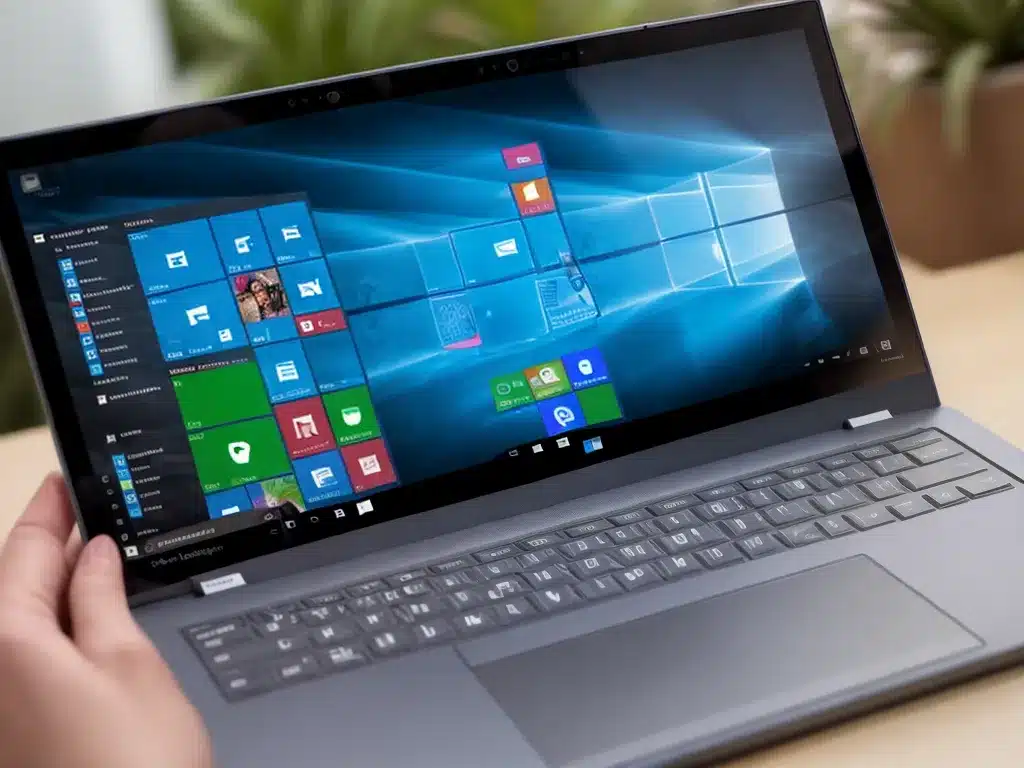
Introduction
With the release of Windows 10 in 2015, Microsoft introduced a much more customizable operating system than previous Windows versions. In 2024, Windows 10 is still going strong with new feature updates released twice per year. There are many ways I can customize Windows 10 to suit my personal preferences and boost productivity. In this article, I will provide my top tips for customizing Windows 10 in 2024.
Customize the Start Menu
The Start menu is one of the most frequently used parts of Windows 10. Customizing it can save me time and make my most used apps and features more accessible. Here are some ways I customize my Start menu:
Resize Tiles
- I can resize the tiles in the Start menu by right-clicking them and selecting Resize. This allows me to make the most important app tiles larger for quicker access.
Rearrange Tiles
- The Start menu tiles can be rearranged by clicking and dragging them into my preferred position. I put my most used apps on the left side for easy access.
Remove Tiles
- Any Start menu tiles I don’t use can be removed by right-clicking them and selecting Unpin from Start. This declutters my Start menu.
Add Tiles
- I can add tiles for apps, folders, and contacts by right-clicking the Start menu and selecting the options to pin them. This populates my Start menu with useful shortcuts.
Customize the Taskbar
The Windows taskbar provides quick access to frequently used apps and features. I optimize my taskbar for maximum efficiency:
Rearrange Icons
- The taskbar icons can be rearranged by dragging them into my preferred order. I put my most used apps on the left.
Remove Icons
- Any taskbar icons I don’t need can be removed by right-clicking them and selecting Unpin from taskbar.
Resize Icons
- I can resize the taskbar icons by adjusting the taskbar settings. Smaller icons give me more screen space.
Use Small Taskbar Buttons
- Enabling the small taskbar buttons option reduces each icon to save space for more pinned apps.
Customize the Desktop
I like to customize my Windows 10 desktop background, icons, and organization to make it aesthetically pleasing and practical:
Change the Background
- I use my own photos as the desktop background for a personalized look. The photos automatically rotate each day.
Organize Desktop Icons
- I keep my desktop icons organized into neat groups. Related folders and files are arranged together for easy access.
Adjust Icon Size
- Increasing the desktop icon size makes them more visible and touch-friendly for tablet mode use.
Add Useful Gadgets
- Desktop gadgets like a clock, calendar, and system monitor help my productivity. I carefully choose useful, minimalist gadgets.
Customize System Settings
There are many Windows 10 system settings I have customized for increased productivity:
Streamline Startup
- I disabled unnecessary startup programs through the Task Manager to speed up boot time. Only my essential apps launch at login.
Automate Maintenance
- Windows Update, backups, and antivirus scans are all scheduled to run automatically at optimal times when I’m not using my PC.
Customize Power Options
- The Power & sleep settings are adjusted so my PC sleeps after 30 minutes of inactivity to conserve energy.
Set Dark Theme
- I find the dark mode theme easier on my eyes and battery life. I enable it for all system menus and apps.
Use Third-Party Apps
Third-party apps can further enhance the customization of Windows 10:
Visual Customization
- Apps like Rainmeter and StartIsBack offer extensive visual tweaks from customized layouts to animated wallpapers.
Efficiency Tools
- Programs like DisplayFusion provide window management tools, while WGestures adds customizable touchpad gestures.
System Utilities
- CCleaner keeps my system optimized by cleaning temporary files and invalid registry entries. Shelter sandboxes my browsers for privacy.
Interface Mods
- Utilities like Classic Shell restore the classic Windows interface. Open-Shell adds enhanced start menus and taskbars.
Conclusion
With its flexible and customizable interface, Windows 10 allows me to optimize my desktop and settings to boost everyday productivity. Following these tips, I can craft a streamlined interface designed around my unique needs and preferences. A personalized Windows 10 setup makes me more efficient and happy while using my PC.












